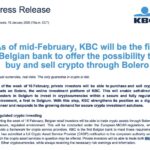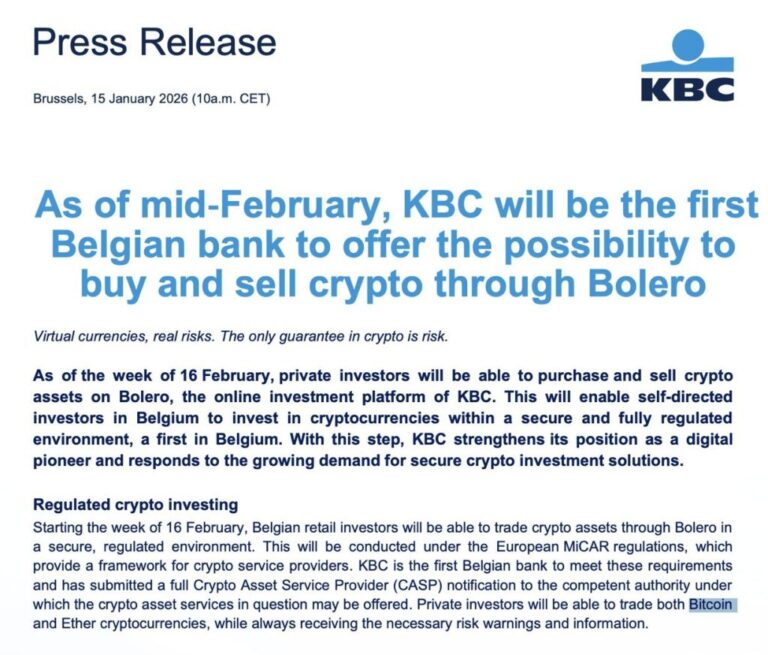Last updated:
 Why Trust Cryptonews
Why Trust Cryptonews
In a wide-ranging exclusive interview with Cryptonews Podcast, Isha Varshney, the Head of Ecosystem at the Celo Foundation, discussed actual real-world use cases and their vast benefits, as well as the concept of reputation-based credit.
She talked about the success of the MiniPay wallet and how Celo helps projects navigate the difficult TGE process.
The Core Ethos: Real-World Use Cases on the Ground
Celo is a Layer-1 blockchain transitioning to Layer-2. Just recently, the team made a major move by launching the testnet.
“We got a massive shout-out from Vitalik [Buterin, Ethereum co-founder], Varshney told Matt.
The team currently has two main areas of focus, both aimed towards the same goal.
Primarily, Celo is a “very purpose-driven, mission-oriented” project.
Because its mission is “prosperity for all,” it means its focus is on actual real-world use cases and solutions. That is Celo’s core ethos.
While real-world assets (RWAs) are a big part of that mission, the target is not institutional capital providers adding liquidity to massive pools.
“We’re talking about RWAs where it really matters, where it’s grassroots on the ground,” she explained.
The second relevant focus are stablecoins. These assets are massively beneficial in economies where the national currency devaluates fast and vastly.
Therefore, “imagine having the ability to store your value in a dollar-denominated currency, which doesn’t fluctuate so much,” Varshney said.
For many in the world, this is not significant, but for others, it’s the difference between “sending one or two kids to school.”
You might also like
Reputation-Based Credit
About half a year ago, RWAs on-chain would mean private credit – but it’s loaning to enterprises and businesses.
This is not what private credit on Celo is about, Varshney remarked.
A notable example is the Haraka protocol.
They are essentially replicating existing models of community credit, but they issue stablecoin-based microloans based on social reputation.
The communities it serves, specifically in Kenya, have done this type of finance for ages.
“That makes an increase of actual capital into the ecosystem, but also at rates that are affordable,” Varshney said.
For example, a shopkeeper takes out a loan to build a shelf in the shade to sell their tomatoes outside. The revenue increases, they pay off the loan and maybe take another one to add more inventory.
“It’s not complicated. It’s really simple math,” Varshney said. “It makes math for the investor who’s adding capital to this, because it’s actually a great yield.”
She went on to say that this distribution network didn’t exist in traditional markets. Banks and traditional financial institutions don’t want to give SME loans, she said.
“And these are not even SME. These are MSME [Micro, Small, and Medium Enterprises] loans,” she noted.
However, Celo-based protocols offer MSME “real use cases that I think a lot more of Web3 should focus on.”
Celo is not working on onboarding the next billion users. “I think that’s become a big tagline for every single person in Web3,” Varshney remarked.
Instead, they’re onboarding net-new users to Web3 in a way that is familiar to them – and they don’t know they’re getting a Web3 loan.
They do not need to understand any of the technology. At the end of the day, they get a loan and can pay it back in a format that they’re comfortable with. “That’s it.”
You might also like
Navigating the Turbulent TGE Seas
Celo Foundation’s Bloom is an advisory service for projects to help them navigate their token generating events (TGEs).
“I’m really excited about this specific program for one clear purpose: this was the need that we heard from so many builders,” Varshney told Cryptonews.
Many builders lack access to investors, market makers, and exchanges. Building these networks is difficult.
Therefore, Celo seeks to bring together all its builders doing TGE and help them navigate this difficult process.
It helps them with what they need, such as introductions, negotiating a deal, making certain decisions that require expert input, etc.
While some builders are US- and Europe-based, others are situated in Africa and Latin America, where even investor networks are not as robust. Therefore, “for our ecosystem is really important to help with some of this,” Varshney said.
You might also like
MiniPay is a Success
Lastly, Varshney discussed the self-custodial stablecoin wallet MiniPay and its partnership with Opera.
“Minipay is my favorite part of Web3,” Varshney said. “From the time I landed in Nairobi till the time I flew, I used the Minipay wallet to make every single payment […] coffee, Uber, whatever.”
The wallet is embedded in the Opera browser, with over a hundred million users across Africa.
It allows its users to store value in dollar-denominated stablecoins, on- and off-ramp quickly and efficiently, send money cross-border, and much more.
The team also integrated a savings protocol.
Just recently, while in Kenya, the team celebrated the wallet’s one-year anniversary.
“Publicly, we’re at 3.5 million users,” she said. “These are net-new Web3 users,” not veteran crypto users or degens.
Meanwhile, Mainnet will go live in the future, as well as “some really exciting L2 and stablecoin-focused stuff.”
The team is also working on bringing the FX markets on-chain. “That, to me, is real-world use of Web3, but that’s me,” Varshney concluded.
You might also like
____
That’s not all.
In this interview, Varshney also discussed:
- Celo’s move from L1 to L2: moving back into the Ethereum ecosystem;
- stablecoins as a good product market fit for Web3;
- expanding the use cases for stable assets, including remittances, savings, lending, and cross-border payments;
- Celo expanding its ecosystem across Africa to accelerate Web3 adoption;
- growing up in India and Kenya, becoming ‘a product of a weird mix of cultures’;
- being a chartered accountant and coming from a financial background;
- emerging markets and their ‘incredible potential’ as a large focus in her career;
- getting into Web3 to be in a mission-driven purpose organization that also focuses on emerging markets.
You can watch the full podcast episode here.
__________
About Isha Varshney
Isha Varshney is the Head of Ecosystem at the Celo Foundation.
She has expertise in decentralized finance, digital currency, and the intersection of technology and economic and social inequality.
Varshney also supports global pilots developing Web3 use cases and reimagining infrastructure in emerging markets to increase financial inclusion.
She previously co-founded a fintech company, has an MBA from Oxford’s Saïd Business School, and is a qualified Chartered Accountant.



















